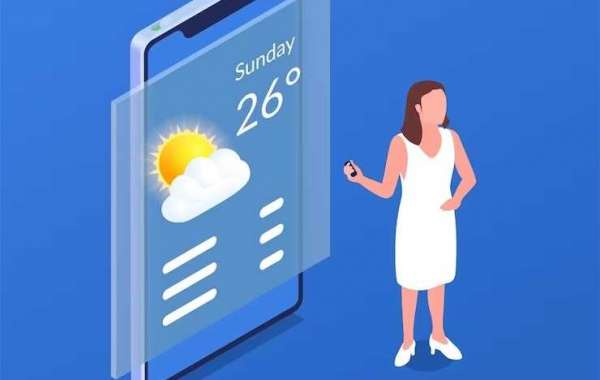Weather data plays a pivotal role in our lives, influencing everything from daily plans to critical decisions in various industries. Weather JSON APIs have emerged as powerful tools for accessing meteorological information in a structured and efficient manner. In this comprehensive guide, we will delve into the world of Weather JSON APIs, their significance, core components, industry applications, and a review of notable providers. By the end of this exploration, you will have a deep understanding of how Weather JSON APIs are revolutionizing the accessibility and utilization of meteorological data.
The Importance of Weather JSON APIs
Weather JSON API serves as the backbone of modern weather-related applications and services. They facilitate seamless access to a wealth of meteorological data in a structured JSON format. These APIs are integral for developers, businesses, researchers, and weather enthusiasts looking to integrate weather data into their applications and systems.
The Power of Structured JSON Data
JSON (JavaScript Object Notation) is a lightweight data-interchange format that is both human-readable and machine-readable. Weather JSON APIs provide meteorological data in this structured format, making it easy to parse, manipulate, and integrate into a wide range of applications.
Core Components of Weather JSON APIs
Weather JSON APIs typically consist of several core components:
a. Current Conditions: Real-time weather data, including temperature, humidity, wind speed, and atmospheric pressure.
b. Short-Term Forecasts: Predictions for the next few hours to a few days, offering hourly or daily breakdowns of expected weather conditions.
c. Long-Term Forecasts: Projections for the coming weeks or months, providing insights into seasonal trends and climate patterns.
d. Severe Weather Alerts: Timely notifications about extreme weather events like hurricanes, tornadoes, and floods to ensure public safety.
Real-Time Access to Structured Data
One of the primary advantages of Weather JSON APIs is their ability to provide real-time access to structured meteorological data. Developers can seamlessly integrate this data into their applications, ensuring that users receive up-to-the-minute weather information.
Diverse Industry Applications
Weather JSON APIs find applications across a multitude of industries:
a. Agriculture: Farmers use weather data to optimize planting and irrigation schedules, protect crops from adverse weather, and enhance overall yield.
b. Transportation: Airlines, shipping companies, and logistics providers leverage real-time weather data to enhance safety, optimize routes, and minimize disruptions caused by adverse weather.
c. Energy: Utilities use weather forecasts to predict energy demand, optimize energy production, and respond proactively to weather-related challenges that can affect power generation and distribution.
d. Construction: Weather data plays a pivotal role in construction planning, scheduling, and ensuring worker safety, particularly in regions prone to extreme weather.
e. Emergency Management: Government agencies and emergency responders rely on forecasts and alerts to prepare for and respond to natural disasters and extreme weather events.
Selecting the Right Weather JSON API
Choosing the appropriate Weather JSON API requires careful consideration of specific requirements. Factors to evaluate include data accuracy, coverage, update frequency, pricing models, and the availability of comprehensive documentation and support from the API provider.
Notable Weather JSON API Providers
Several Weather JSON API providers offer a wide array of meteorological data and services:
a. OpenWeatherMap API: Known for its extensive data coverage, it provides access to a broad spectrum of weather information, including current conditions, forecasts, historical records, and severe weather alerts.
b. The Weather Channel API: Renowned for its trusted weather forecasts, it offers access to current conditions, forecasts, and a vast repository of meteorological data.
c. Dark Sky API: Celebrated for its hyper-local weather forecasts and minute-by-minute precipitation predictions.
d. Climacell (Tomorrow.io) API: Specializes in highly accurate weather forecasts tailored to specific industries, including transportation, energy, and agriculture.
e. AccuWeather API: Provides a suite of weather data services, including minute-by-minute precipitation forecasts and long-range weather predictions.
Leveraging Structured JSON Data
Weather Free API provides developers with the structured data they need to create dynamic and interactive weather applications. Developers can parse JSON responses to create customized weather dashboards, charts, maps, and widgets, offering users a rich and engaging experience.
Challenges and Considerations
While Weather JSON APIs offer significant advantages, they also come with certain challenges. These may include occasional data inaccuracies, the need for reliable data sources, addressing potential downtime, and ensuring that the infrastructure can withstand high volumes of data requests during severe weather events.
Future Trends in Weather JSON APIs
The future of Weather JSON APIs is promising. Advances in data science, machine learning, and artificial intelligence are expected to further enhance forecast accuracy. Additionally, there is a growing focus on providing climate-related data and projections, aligning with the increasing importance of addressing climate change-related challenges.
In conclusion, Weather JSON APIs have transformed the way we access and utilize meteorological data. Whether you are a developer creating a weather app, a business optimizing logistics, or a researcher studying climate trends, structured JSON data enables you to make informed decisions and adapt to changing weather conditions. When selecting a Weather JSON API, consider your specific requirements and the capabilities of the API provider. With Weather JSON APIs at your disposal, you can harness the power of structured data to navigate the ever-changing atmospheric conditions with precision, efficiency, and data-driven insight.











